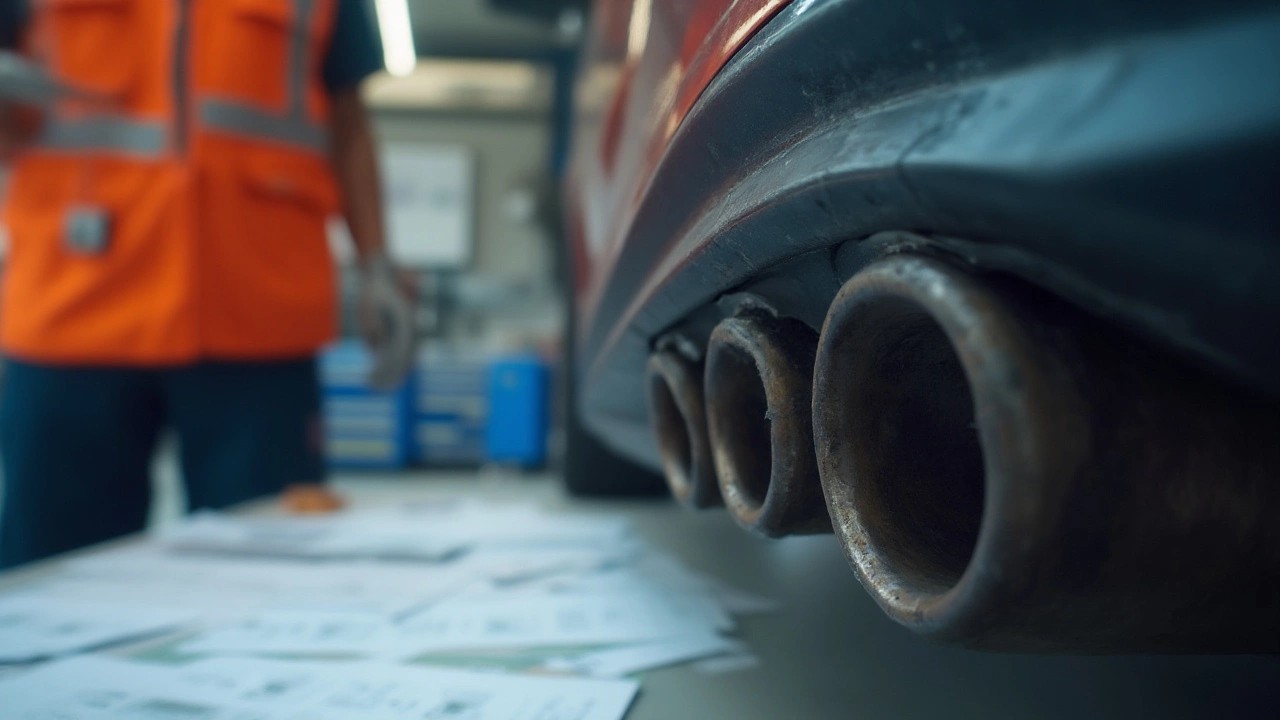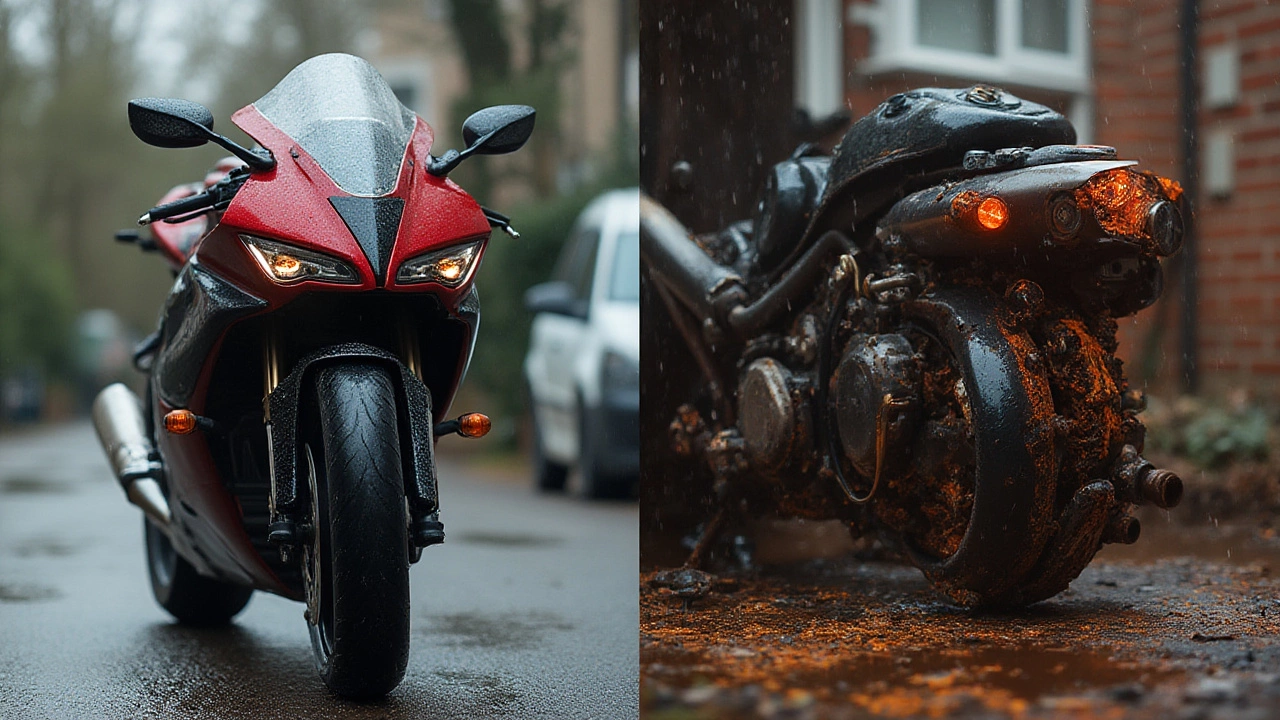Every bike owner loves tinkering—there is something primal about swapping out parts, chasing better sound, more power, or just a cooler vibe. The slip-on exhaust is the misunderstood troublemaker in motorcycle garages everywhere. With their easy install and tempting price tag, they seem like a no-brainer, right? But there’s a catch. The moment you bolt one on, you start dealing with a handful of issues that no glossy online video or Instagram influencer ever seems to mention. Yet, these drawbacks can affect how your bike runs, how long it lives, and sometimes, how legal you stay on the road.
Performance Trade-Offs That Sneak Up On You
Let’s talk horsepower, throttle response, and that special growl. Most riders imagine a slip-on exhaust is all upside—a free-breathing engine, a touch more pull, even a shot at some new-age fuel mileage. But here’s the cold splash of reality: a slip-on doesn’t rework magic on your bike’s actual performance numbers. It mostly changes the sound. Sure, because you’re replacing only the muffler, the real bottlenecks of your exhaust system—the mid-pipes and headers—stay put. That means most actual horsepower and torque gains either don’t happen at all or are so small you’d need a dyno to even notice.
A 2022 real-world dyno test by Cycle World magazine found that modern slip-ons add somewhere between zero and 2 horsepower—sometimes, riders even lost torque in the lower RPM range. On bikes designed with emissions and fuel mapping in mind, slapping on a louder can can actually throw off your air/fuel ratio. Now, if you’re on an older carbureted machine, you can get away with it (sometimes). But with fuel-injected bikes, expect to shell out extra for an EFI tune if you want any sort of safe performance. Leave it untouched, and your engine may run lean, leading to hotter temps, rougher idling, and a shot at long-term damage.
Many slip-on buyers end up disappointed that their bike doesn't "feel" much faster. You might lose power lower in the rev range, dampening throttle response in everyday riding—right where you want it most riding through city traffic or accelerating at a stoplight. Even if you add a slip-on from a top-shelf brand, the story rarely changes, since the factory headers still choke most of the flow. Not to mention, the added noise can be tiring on long highway rides, especially if the pipe eliminates critical baffles or resonators. Add to all that the annoying "drone" effect—where a certain RPM range buzzes right through your helmet—and you have a pretty good recipe for buyer's remorse.
There's also a hidden effect on fuel economy. Not many people mention the fact that a slightly leaner or richer mix (thanks to a new muffler) can impact miles per gallon. It’s rarely drastic, but you might notice an extra stop or two at the pump across hundreds of miles. For commuters, that’s one more hassle to keep in mind. Most slip-ons won’t play nicely with your bike’s stock mapping, putting you smack in the middle of a trade-off between consistent performance and a snappier sound. When the "mod bug" hits, it pays to look past the hype and check actual dyno data before believing you’ll get race-bike thrills just by swapping the muffler.
| Performance Factor | Stock Muffler | Slip-On Exhaust |
|---|---|---|
| Peak Horsepower (Average) | 100 HP | 100–102 HP |
| Torque (Low RPM) | Consistent | May Decrease |
| Reliability | High | Can decrease without tuning |
| Noise Level | Moderate | High |
| Fuel Economy Impact | Stable | Small Decrease |

Legal, Warranty, and Compliance Headaches
This is where slip-on exhausts start to look less like a quick win and more like a gamble. They’re a gray area in most places—literal gray in some states and dark gray in others. In the US, the Environmental Protection Agency (EPA) and the California Air Resources Board (CARB) have strict standards about what you’re allowed to change on your motorcycle’s emissions equipment. Swap out even just the muffler, and suddenly your bike could be in violation. Yes, enforcement varies city by city, but one angry neighbor or a bored cop with a decibel meter can make your day go south fast. In cities like New York, Chicago, and Los Angeles, ticket blitzes targeting loud pipes are getting routine.
Manufacturers do their best to skirt the line—some pipes are labeled as "for off-road use only" or "not for street use" even when sold at dealerships. That little sticker isn’t just for show. If you’re thinking, "Oh, that’s just legalese," think again. Getting caught with a non-compliant pipe in California brings a fine of $100 to $1,000, and could mean a failed inspection or registration renewal. That’s not to mention possible points on your license if you rack up multiple infractions. In the UK, the MOT test can immediately fail you for a muffler that is “louder than standard.” Check with your DMV or road authority—some states require all exhausts to bear an EPA approval stamp. If yours doesn't have it, you're rolling the dice.
Here’s a handy table to spell out how tricky this can get:
| Region | Legal for Street? | Fine Range | Inspection Impact |
|---|---|---|---|
| California | Often No | $100–$1,000 | Fails emissions |
| UK | No if louder than stock | £50–£150 | Fails MOT |
| Australia (NSW) | No over 94 dB | $150–$500 | May void rego |
| Most US States | Varies | $50–$500 | Possible inspection fail |
Then, you have your bike’s warranty to think about. Some manufacturers won’t cover engine or exhaust issues after you swap in an aftermarket slip-on—even when you keep the rest of the exhaust stock. Your local dealer might wave it away, but factory reps can dig their heels in on big claims. Kawasaki, Yamaha, and Honda all reserve the right to void your powertrain warranty for “unapproved modifications.” Even if you keep all your receipts and document every bolt you touch, a non-stock muffler opens the door for headaches later.
Insurance is another minefield. Certain providers treat modified exhausts as enough of an upgrade to require you to declare them. If you don’t, you could see a claim denied after a crash—just because the bike didn’t match what’s on paper. Always double-check the terms and add the exhaust to your policy. Saving a few bucks up front just isn’t worth the risk when one accident can cost thousands and leave you holding the bill. If you ever plan to sell your ride, be aware many buyers (and some resellers or dealerships) get spooked by non-compliant pipes. That means less money in your pocket and a much narrower pool of buyers.

Longevity, Fitment, and Real-World Annoyances
The stuff most folks don’t talk about? That’s where things get real. Slip-on exhausts don’t come out of a magic machine—they’re mass produced to "almost fit" a slew of models. Sometimes you’ll bolt it up and discover mounting brackets lined up like they belong on a totally different bike. A 2024 RevZilla survey found that nearly 20% of buyers had to modify or bend brackets just to get a snug fit. Not only can this make installation a bear, but improper fitment could lead to exhaust leaks, rattling, or even damage to your bike’s frame or rear sets.
Materials matter more than you’d expect. Cheap slip-ons (especially those from questionable online sellers) use thin wall stainless, sub-par welding, or fake carbon fiber. These can crack, degrade, or vibrate loose over time. There have been plenty of social media videos showing slip-ons falling apart on the highway. The heat cycles a muffler endures are no joke—temps can hit 1,200°F at the tip during hard riding. If you’re running a one-size-fits-all eBay special, don’t be shocked if discoloring, melted badges, or even full-on breaks appear after a single season.
On top of that, the idea that slip-ons are maintenance free is a total myth. With weaker mounts or rubber bushings, vibration can slowly work bolts loose, upping your chances of damage. Some models, especially those eliminating the heavy stock can, put more strain on the rear subframe. Add in the extra decibels and you’ll often notice more droning, backfires, and—if your fueling isn’t spot-on—the weird "popping" on deceleration. Performance-obsessed riders know this isn’t just an annoyance; it can signal the engine isn’t running right and might shorten your valve or spark plug life.
Long rides reveal more issues: wind carrying the sound right up into your helmet, fatigue kicking in from a monotonous exhaust note, and passengers complaining about the noise. If you commute, the extra dB can make parking garages and tunnels feel like you’re running laps at a track day. Noise anxiety is real, too. More riders are reporting being pulled over or ticketed simply for being "that guy" with a shouty pipe. Road trips can become a stress test if your exhaust is so loud you plan stops around noise traps or stretch to avoid annoying the neighbors each morning.
Let’s not ignore resale. Swapping back to a stock exhaust before selling? It’s often a hassle—a lot of riders sold off their factory pipes after upgrading, not realizing they were killing future value. New buyers or dealerships love seeing stock setups, especially if local noise laws are tight or buyers want a "clean slate" to mod their own way. There have even been instances where selling a bike with a non-compliant pipe led to registration or insurance headaches for the new owner.
If you’re still set on getting a slip-on, pick a reputable brand and double-check fitment, legal status, and any tunes needed to keep your bike running smooth. Save your stock muffler in the garage—future you will thank you. Most slip-on exhaust hype comes from looks and sound, not a power boost. Knowing all the headaches upfront makes for smarter—and a lot more enjoyable—riding in the end.
